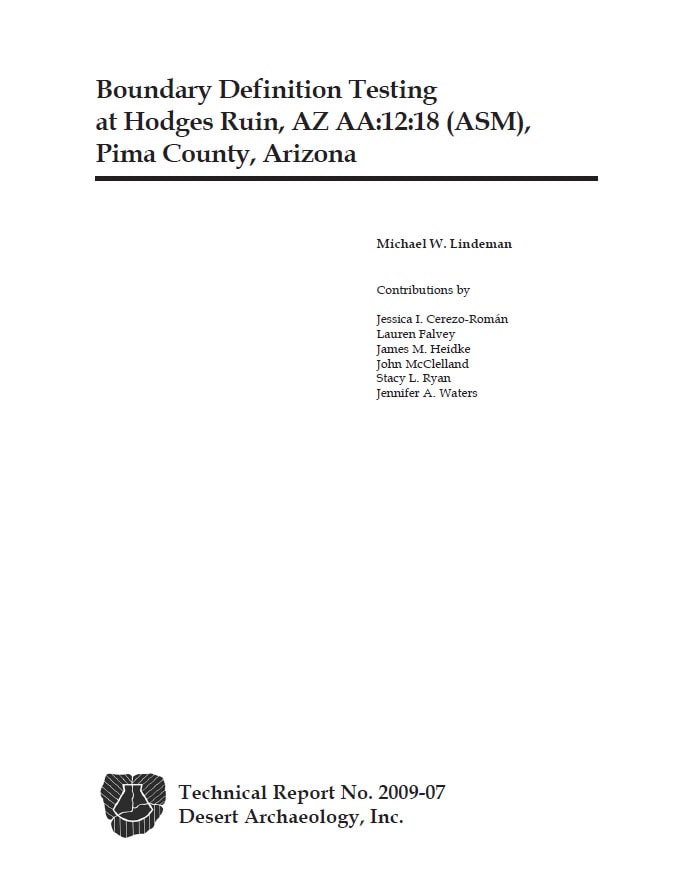Description
Boundary Definition Testing at Hodges Ruin, AZ AA:12:18 (ASM), Pima County, Arizona (TR2009-7) (PDF)
The results of boundary definition testing at the southeastern margin of AZ AA:12:18 (ASM), the Hodges Ruin, are presented in this report. Hodges Ruin has been determined to be eligible for inclusion in the National Register of Historic Places. The focus of this project is two contiguous parcels of land totaling approximately 6 acres on the western side of La Cholla Boulevard between Ruthrauff and Wetmore roads. The parcels are owned by the Flowing Wells School District and the district intends to construct an Early Childhood Center on the parcels. The goal of the fieldwork was to determine the extent of archaeological features on the parcels with
the hope that construction could be structured around significant cultural resources, leaving areas where prehistoric features are present untouched.
In all, 48 subsurface features, pithouses, mortuary features, and extramural pits were identified, in addition to one scatter of human bone on the surface. While no definitive phase assignments could be generated based on the ceramics collected from the features, the range of potential dates spans from Early Rincon (circa 950-1000) to Late Rincon (circa 1100-1150), centered on the Middle Rincon phase (circa 1000-1100). The features were concentrated in the western half of the parcel. Based on the fieldwork, the eastern boundary of Hodges Ruin was established as passing through the parcel 60 m to 70 m west of La Cholla Boulevard. Features continued to the southern edge of the project area, suggesting that the southeastern corner lay beyond the examined parcels.
